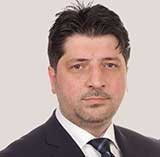Czech Republic
The Czech Republic has the second highest economic growth in the EU.
The Czech Republic has a developed, high-income export-oriented social market economy based in services, manufacturing and innovation, that maintains a welfare state and the “continental” type of the European social model. The Czech Republic is participating in the European Single Market as a member of the European Union, and is therefore a part of the economy of the European Union, but uses its own currency, the Czech koruna, instead of the euro. It has a per capita GDP rate that is 88% of the EU average and is a member of the OECD. Monetary policy is conducted by the Czech National Bank, whose independence is guaranteed by the Constitution.
As of 2017, the Czech GDP per capita at purchasing power parity is $35,223 (similar to Israel, Italy or Slovenia), $19,818 at nominal value and the GDP growth was 4.5% in 2017, giving the Czech economy one of the highest growth rates in the European Union. As of January 2018, the unemployment rate in the Czech Republic was the lowest in the EU at 2.4%, and the poverty rate is the second lowest of OECD members only behind Denmark. Czech Republic ranks 24th in both the Index of Economic Freedom (ranked behind Norway) and the Global Innovation Index (ranked behind Australia), 31st in the Global Competitiveness Report 30th in the ease of doing business index and 25th in the Global Enabling Trade Report (ranked behind Canada).
The Czech Republic has a highly diverse economy that ranks 7th in the 2016 Economic Complexity Index. The industry sector accounts for 37.5% of the economy, while services for 60% and agriculture for 2.5%. The largest trading partner for both export and import is Germany and the EU in general. The country has been a member of the Schengen Area since 1 May 2004, having abolished border controls, completely opening its borders with all of its neighbours (Germany, Austria, Poland and Slovakia) on 21 December 2007. The Czech Republic became a member of the World Trade Organisation on 1 January 1995.
Industry
In 2015 the largest companies by revenue in the Czech Republic were: one of the largest car automobile manufacturers in Central Europe Škoda Auto, utility company ČEZ Group, conglomerate Agrofert, energy trading company RWE Supply & Trading CZ and electronics manufacturer Foxconn CZ. Other Czech transportation companies include: Škoda Transportation (tramways, trolleybuses, metro), Tatra (heavy trucks, the third oldest car maker in the world), Avia (medium trucks), Karosa and SOR Libchavy (buses), Aero Vodochody (military aircraft), Let Kunovice (civil aircraft), Zetor (tractors) and Jawa Moto (motorcycles).
Škoda Transportation is the fourth largest tramway producer in the world; nearly one third of all trams in the world come from Czech factories.[92] The Czech Republic is also the world’s largest vinyl records manufacturer, with GZ Media producing about 6 million pieces annually in Loděnice.
Energy
Production of Czech electricity exceeds consumption by about 10 TWh per year, which are exported. Nuclear power presently provides about 30 percent of the total power needs, its share is projected to increase to 40 percent. In 2005, 65.4 percent of electricity was produced by steam and combustion power plants (mostly coal); 30 percent by nuclear plants; and 4.6 percent from renewable sources, including hydropower. The largest Czech power resource is Temelín Nuclear Power Station, another nuclear power plant is in Dukovany.
The Czech Republic is reducing its dependence on highly polluting low-grade brown coal as a source of energy. Natural gas is procured from Russian Gazprom, roughly three-fourths of domestic consumption and from Norwegian companies, which make up most of the remaining one-fourth. Russian gas is imported via Ukraine (Druzhba pipeline), Norwegian gas is transported through Germany. Gas consumption (approx. 100 TWh in 2003–2005) is almost double electricity consumption. South Moravia has small oil and gas deposits.
Transportation infrastructure
Václav Havel Airport in Prague is the main international airport in the country. In 2010, it handled 11.6 million passengers, which makes it the second busiest airport in Central Europe. In total, the Czech Republic has 46 airports with paved runways, six of which provide international air services in Brno, Karlovy Vary, Mošnov (near Ostrava), Pardubice, Prague and Kunovice (near Uherské Hradiště).
České dráhy (the Czech Railways) is the main railway operator in the Czech Republic, with about 180 million passengers carried yearly. With 9,505 km (5,906.13 mi) of tracks, the Czech Republic has one of the densest railway networks in Europe. Of that number, 2,926 km (1,818.13 mi) is electrified, 7,617 km (4,732.98 mi) are single-line tracks and 1,866 km (1,159.48 mi) are double and multiple-line tracks. Maximum speed is limited to 160 km/h. In 2006 seven Italian tilting trainsets Pendolino ČD Class 680 entered service.
Russia, via pipelines through Ukraine and to a lesser extent, Norway, via pipelines through Germany, supply the Czech Republic with liquid and natural gas.
The road network in the Czech Republic is 55,653 km (34,581.17 mi) long. There are 1,247 km of motorways. The speed limit is 50 km/h within towns, 90 km/h outside of towns and 130 km/h on motorways.
Communications and IT
The Czech Republic ranks in the top 10 countries worldwide with the fastest average internet speed. By the beginning of 2008, there were over 800 mostly local WISPs, with about 350,000 subscribers in 2007. Plans based on either GPRS, EDGE, UMTS or CDMA2000 are being offered by all three mobile phone operators (T-Mobile, Telefónica O2, Vodafone) and internet provider U:fon. Government-owned Český Telecom slowed down broadband penetration. At the beginning of 2004, local-loop unbundling began and alternative operators started to offer ADSL and also SDSL. This and later privatisation of Český Telecom helped drive down prices.
On 1 July 2006, Český Telecom was acquired by globalized company (Spain-owned) Telefónica group and adopted the new name Telefónica O2 Czech Republic. As of 2017, VDSL and ADSL2+ are offered in many variants, with download speeds of up to 50 Mbit/s and upload speeds of up to 5 Mbit/s. Cable internet is gaining popularity with its higher download speeds ranging from 50 Mbit/s to 1 Gbit/s.
Two major antivirus companies, Avast and AVG, were founded in the Czech Republic. In 2016, Avast led by Pavel Baudiš bought rival AVG for US$1.3 billion, together at the time, these companies had a user base of about 400 million people and 40% of the consumer market outside of China.[102][103] Avast is the leading provider of antivirus software, with a 20.5% market share.
Hedging & Refinancing Options
According to the Country Risk Classification published by the OECD, hedging and refinancing options are available.






